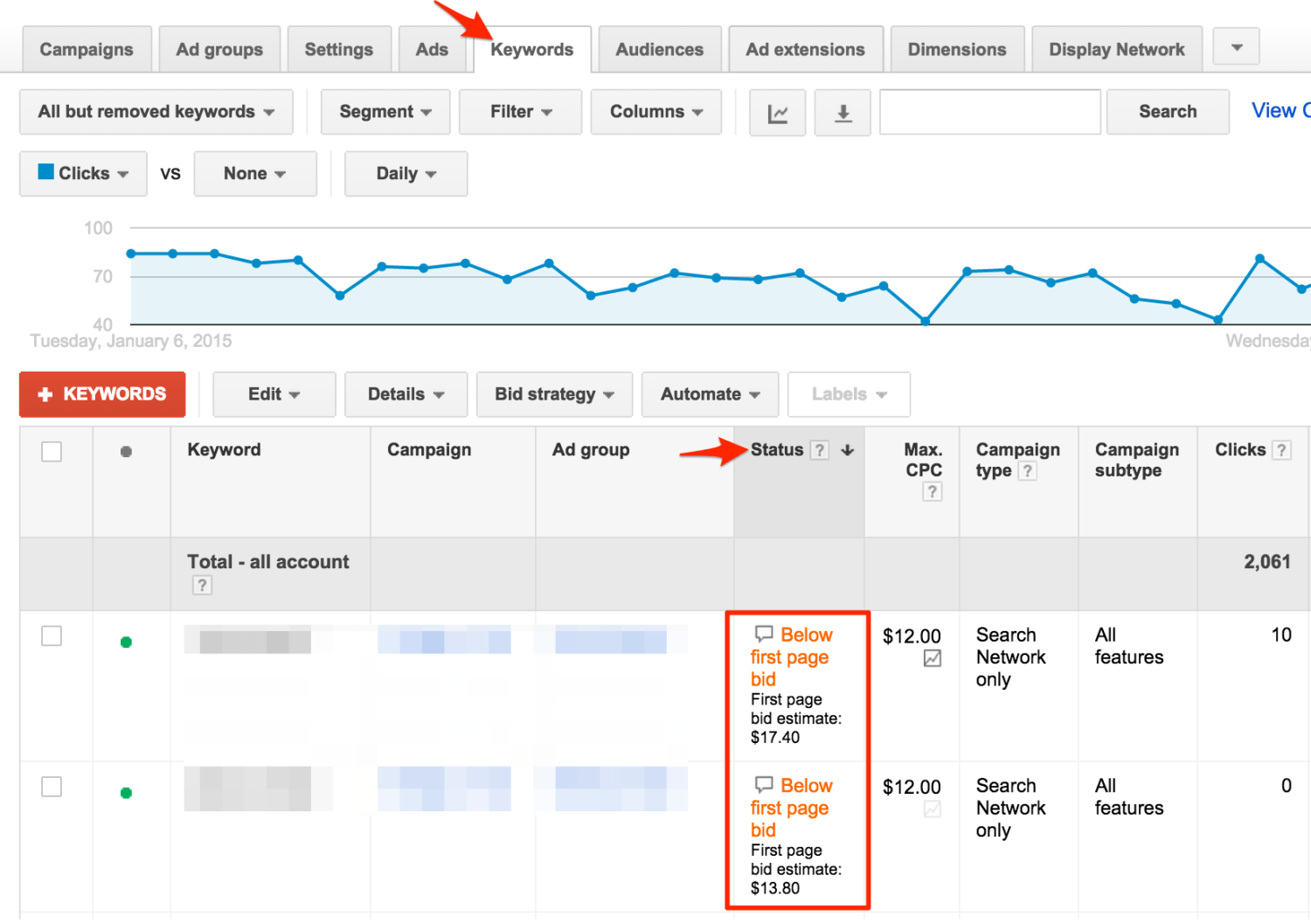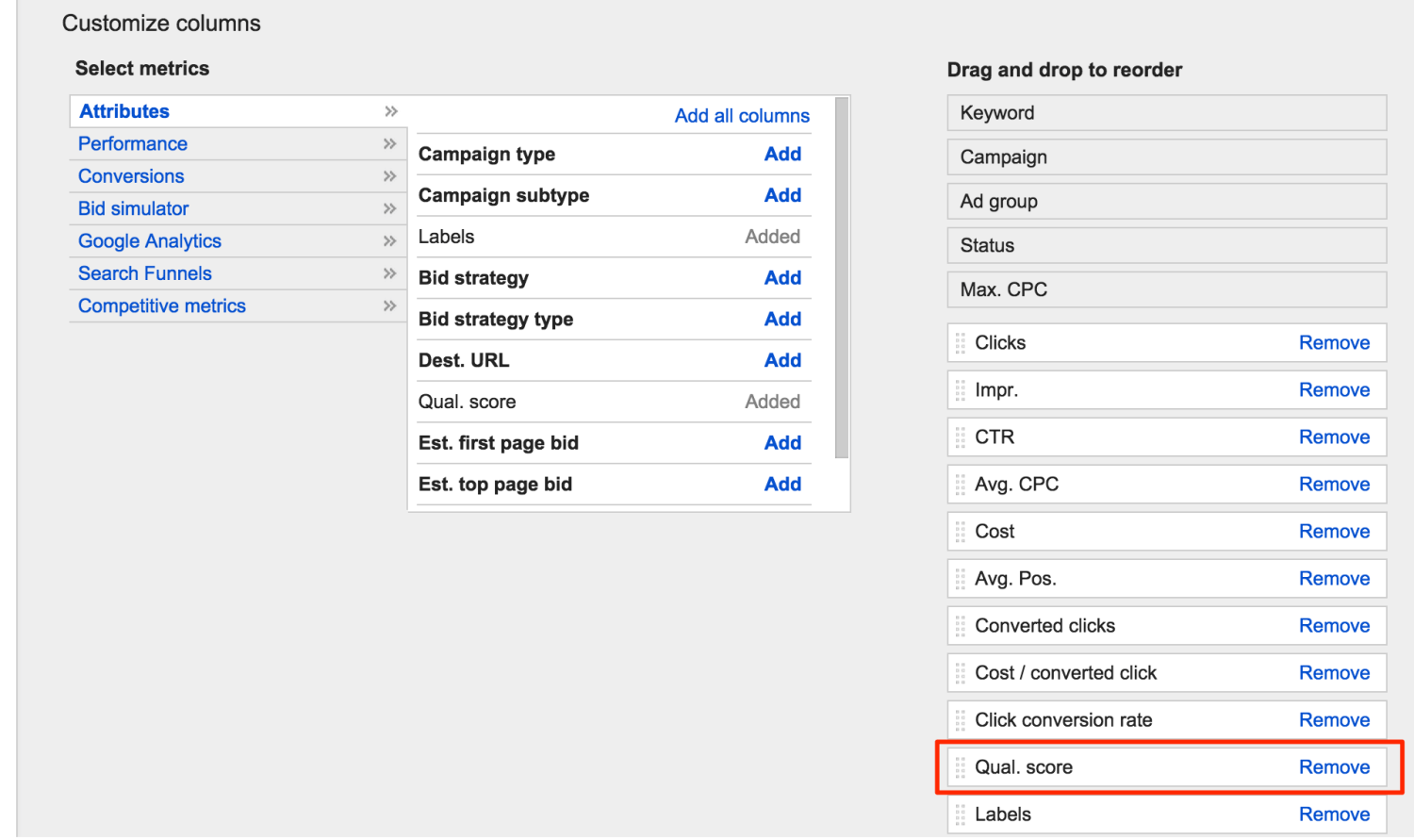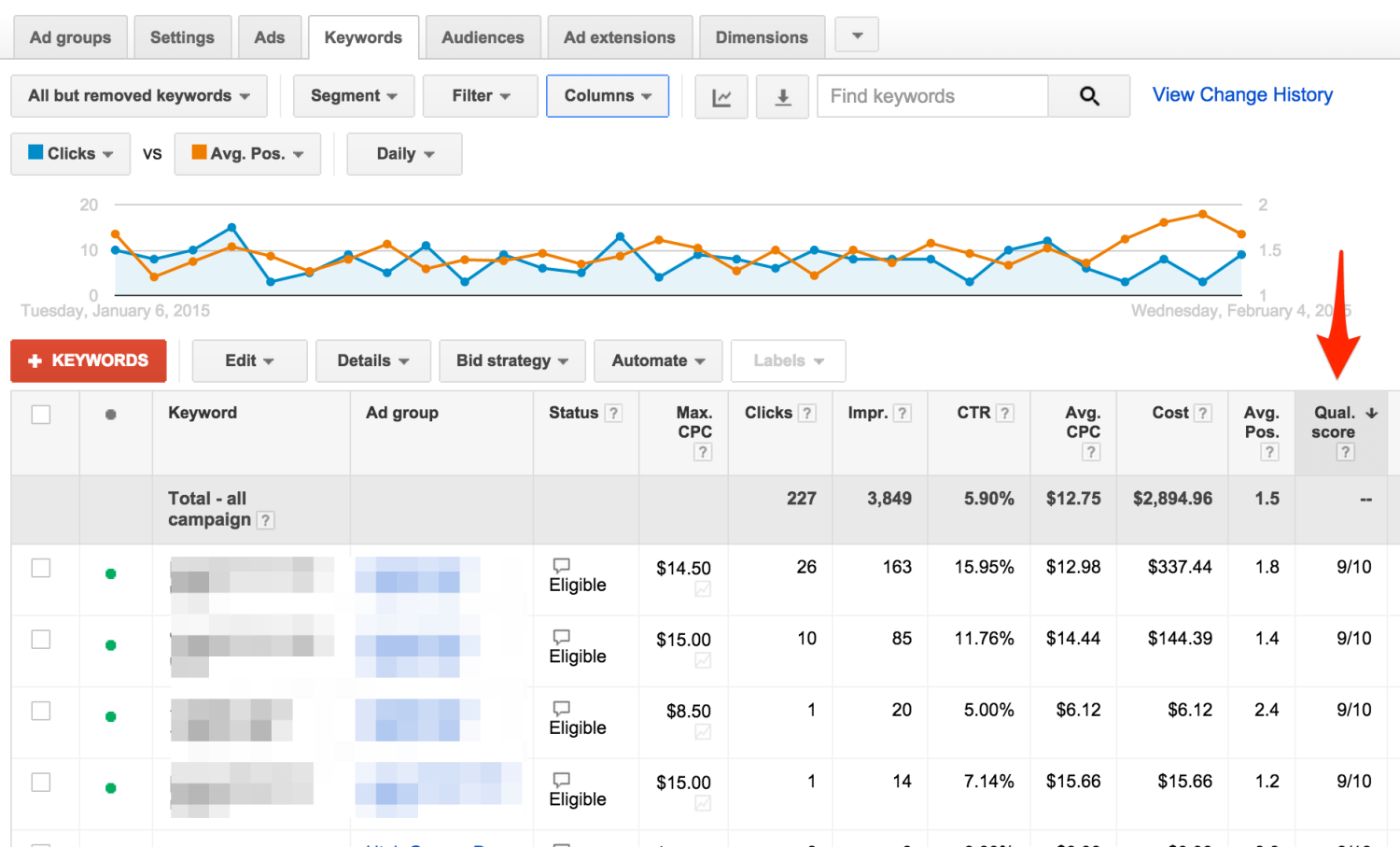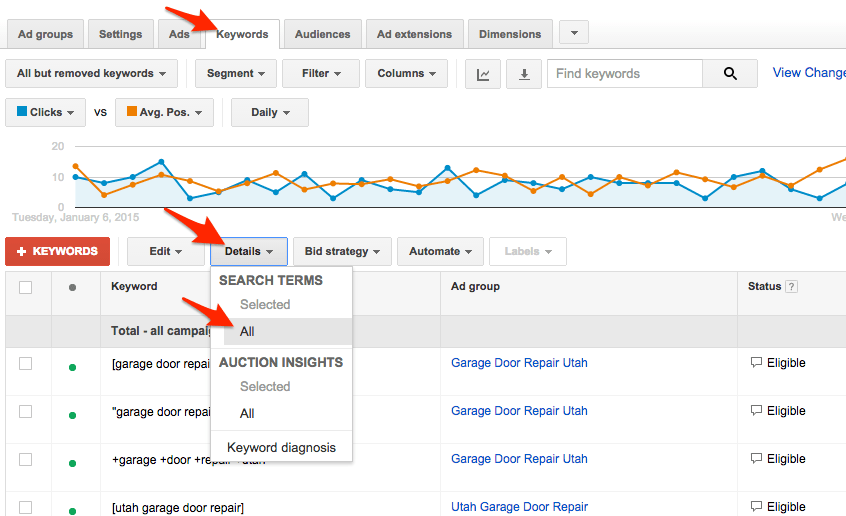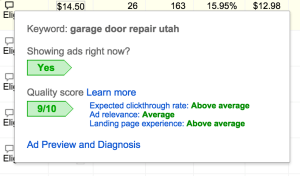How to Get Your AdWords Ad Showing on the First Page
by Blake Larson • March 4, 2015
If You’re Not On Page 1, You’re Basically Invisible.
Why is it that important for you to be on the first page of Google’s results? According to Marta Kagan over at Hubspot, “75% of internet users never scroll past the first page of search results.” That’s a lot of potential traffic you could be missing if your ad isn’t there!
Having your ad showing on the first page dramatically increases your chances of searchers seeing and clicking on your ads. This post is to help give you some introductory information and tips on getting your ads to the first page of Google AdWords and Bing Ads.
Let’s start by defining some terms:
AdRank
Your Ad Rank is a formula Google uses to determine the position of your ads as part of the auction process. The formula looks like this:
Ad Rank = Bid x Quality Score
So you can increase your Ad Rank not only by increasing your bid, but by increasing your quality score (what’s a quality score? Keep reading!)
Bids
Bids are probably the fastest and easiest way to get your ads to the first page of Google. It might be expensive, but knowing how much you have to pay for a keyword to be on the first page is valuable to know. Knowing how much a keyword will cost you to perform can tell you if it is worth targeting or whether you need to try something that costs less.
If your ads are appearing below the first page AdWords will notify you and provide an estimated bid amount to get your ad showing on the first page. Just click on your “Keywords” tab in your campaign and then click on the “Status” column to sort it and it will place all the keywords that are below first page bid together.
Once you increase these bids it is probably a matter of hours before your ads start to appear on the first page.
A quick note: Google’s estimate aren’t always accurate, and you may have to bid more than you’d expect for some keywords.
Quality Scores
Quality scores is a 1-10 score measuring of how relevant your keyword, ad, and landing pages are. Improving QS is the cheaper way to help improve the position of your ads. First, to find what your quality scores are, jump into your campaign(s) and go to the “Keywords” tab and then click on the “Columns” button which will give you a drop down option of “Customize columns” that you will select.
After you select the “Customize Columns” button you will see a screen like the one above. Here you will select “Attributes” in the left section of the page. Then click the “Add” button next to “Quality Score” in the middle section of the page. This will move it over to the right side of the page were you can change the arrangement of columns you’ve selected.
Hit the apply button at the bottom when you are done and it should take you back to the Keywords view where you can now see your quality scores!
I took the liberty of sorting my keywords by quality score so I looked really good 😉
Raising Your Quality Scores
Some of you are probably asking how you can raise your quality score so you can increase your ad position. There are three components that make up QS: Expected Click Through Rate, Ad Relevance, and Landing Page Experience. You can get a glimpse of how your keywords are ranking in these factors by hovering your mouse over the little chat bubble in the “Status” column.
Google will give each of these 3 components a rating of “below average”, “average”, or “above average”.
[Tweet “You may have to bid more than you’d expect for some keywords.”]
Getting these three factors to “above average” will get your quality scores higher. With an increased quality score are ad position will improve without having to increase bids.
Expected Click Through Rate
Here are a few ways you can raise your click through rate:
Add negative keywords to your campaign and ad groups on a frequent basis. A good place to find negative keywords is in the Search Term Report.
Here you can view a list of some of the search terms triggering your ad. For example, if you have a phrase match keyword “garage repair” you may find that one of the search terms that triggered your ad was “garage repair jobs”.
So, you can ad “jobs” as a negative keywords and this will keep your ads from displaying whenever a search query containing the keyword “jobs” is typed. Adding negative keywords to your campaigns or ad groups will help refine your traffic and increase your click through rates.
Try to focus on high intent keywords. By this I mean bid on keywords where you are almost certain of the searchers intent. Take the keyword “garage door repair service” vs “damaged garage door panel”. The second tells you they’re looking for garage doors for some unspecified reason, while the first tells you they’re looking specifically for a repair.
Type one of your keywords in the Ad Preview & Diagnosis Tool and check what the ads your competitors are running. Use this information to make sure your message speaks directly to your audience with some offers or benefits your competition does not have. This will also help increase click through rates.
Ad Relevancy
Google and Bing attempt to measure how relevant your ad copy is related to your keyword every time someone searches for it.
If you have an AdWords account for heating and air conditioning repair services you would want to make sure your heating repair keywords trigger ads specifically for those services.
Another tool that can help increase ad relevancy is Dynamic Keyword Insertion (DKI). Wordstream wrote a great post on DKI and how to set it up here. DKI allows you to dynamically insert the keyword from your ad group into the ad based on the searcher’s query.
Lets say you have an ad group with these keywords.
Brown shoes
Red shoes
Grey shoes
If someone searched for “red shoes for sale” DKI will dynamically insert the keyword “red shoes” into your ad copy and thus make your ad more relevant and specific to the search query.
The last trick you can use to help increase your ads relevancy is to try and have a single keyword per ad group. For the keywords listed above you could have separate ad groups for Brown Shoes, Red Shoes, and Grey Shoes. This would allow you to create an ad very specific to each keyword. This gives you the most control over your ad relevancy since you will have a very good idea of what search queries trigger your keywords, especially if the keyword is a phrase or exact match.
Landing Page Experience
The easiest way to describe this is by looking at what Google tells you to do on landing pages in order to improve the landing page experience:
• Provide relevant, useful, and original content.
• Your content should promote transparency and fostering trustworthiness on your site (for example, by explaining your products or services before asking visitors to fill out forms sharing their own information),
• Making it easy for customers to navigate your site (including on mobile sites), and
• Encouraging customers to spend time on your site (for example, by making sure your page loads quickly so people who click your ad don’t give up and leave your site prematurely).
[Tweet “Make sure you send traffic to the most relevant pages on your site.”]
If you’re new to AdWords you are most likely sending traffic to your existing website rather than creating landing pages specific for your AdWords campaigns. Something that will help if you don’t have the resources for landing pages yet is to at least make sure you send traffic to the most relevant pages on your site. If your have keywords and ads for garage repairs as well as garage installation it would be a good idea to send the traffic to one page specific to garage repairs and another specific to garage installation. This will help get the most relevant content in front of the user quickly rather than making them dig through your site looking for it.
So these are a tips to help me get my ads to the first page when I build and run my campaigns. Please leave a comment with any useful tools, trips, or tricks you may use to get your ads to the first or top of the first page as well!


